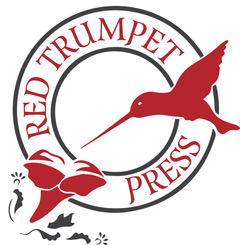… even if they don’t understand a word of it on page one. Adoro l’Italia. I love the food, the people, the architecture, the sound of the language—you name it. So I set my latest romantic suspense novel, The Lair, in Verona, a beautiful, historic city located on the Adige River in the Veneto region of Italy. La campagna intorno a Verona è molto bella! There are hundreds of gorgeous locales in Italy, but you can’t go wrong with the area around Verona; it’s very beautiful..
There, in the time it took you to read the short paragraph I just wrote, you picked up and (I hope) immediately understood several Italian words: Adoro = I love Italia = Italy Veneto = a region of Italy Adige – an Italian river la campagna, = the countryside intorno = around è = is molto bella = very beautiful I want my readers to quickly feel comfortable in this place I assume they know nothing about, and one of the best ways to do that is to inject its language—in my case, Italian. But bringing in a foreign language is tricky, so I’ve done some research and come up with ten tips for using it to enhance but not bog down a story. 1. Write the foreign word or phrase, then translate it directly. In a post for Writing-World (http://www.writing-world.com/) Cora Bresciano lays out several ways to get across the fact that your characters are speaking a foreign language. An example she uses to illustrate this first tip is: “C’é una Chiave!” Sergio cried out in disbelief. It’s a key! This technique works well if you don’t overuse it so that it becomes obvious that you as the author are the translator.  That can become a distraction from your story. 2. Write the foreign word or phrase, then translate it indirectly. I used that technique in my first paragraph. Instead of saying “I love Italy” right after the words Adoro l’Italia, I went on to list other things I “loved.” In the last sentence, I made it pretty obvious by repeating the word “Verona” that the previous sentence meant the area around Verona was beautiful. Within your story, you can have two characters, one of whom speaks the language, say something, and the other person (who doesn’t speak the language) literally asks them what it means. Used sparingly, you can get away with that technique. In The Lair I have a scene in which two detectives (both of whom are speaking Italian, mind you) come across a word in Croatian that neither knows, but they need to know. So I had one of them Google it! You can find creative ways to get the translation across when needed. 3. Use foreign words that lots of people already know, without translating them. Bresciano considers this a valid technique and so do I (again, as long as it’s not overused), but Daniel Kalder, writing in the Guardian http://www.theguardian.com/books/2011/jul/13/phrasebook-foreign-language-fiction , disagrees. He says if two people are speaking Italian (to use my example), their conversation should be written in English for English readers. Hence Signor Forcelli (a character in The Lair) would be “Mr. Forcelli.” Kalder feels it’s “committing a sin for the sake of a little instant atmosphere.” Yes, he’s got a point, but here’s another take: Remember that Gary Larson cartoon, in which he shows what a dog hears is “Blah, blah, blah, blah, FIDO, blah, blah, blah”? So if I’m an English-speaking reader, that occasional Signor in that conversation between two Italian speakers is a reminder to me that they are Italian. Hey, in my mind I’m in Italy! I’m listening in on two Italians talking! How cool is that! It’s a judgment call for the author. 4. Let the reader know when a conversation is taking place in another language so you can then write it in English. The Lair’s main characters, who live in my fictional northern California setting of Sinner’s Grove, have come to Verona to attend the funeral of the heroine’s wealthy father. Both Dani Dunn and Gabe de la Torre are originally from Verona, however both left (for different reasons) when they were much younger. While Gabe has kept up with his native Italian and is still fluent, Dani’s a bit rusty. Here are a couple of places where I had to describe which language was being spoken: Fausta [the estate manager], a cell phone to her ear, held the door open for [Gabe] while talking to someone on the other end of the line. The cadence of her rapid Italian brought back a flood of memories. And in another scene with Dani’s invalid aunt: “How are you, Aunt Ornella?” Dani stood by the bed and took Ornella’s unencumbered hand in her own. “I’m glad you’re speaking English,” she said. “I get so little opportunity to practice it.” 5. Put in words or phrases that most English speakers won’t know, and leave them untranslated…maybe. Anne Korkeakivi, in an article called “Learning to Speak in Tongues” http://www.wsj.com/articles/SB10001424052702304636404577293530441505146/ addresses this topic, as do Kalder and Bresciano. Both Korkeakivi and Kalder find instances where this is acceptable; Ms. Korkeakivi quotes British author Nick Barlay as saying he decided to use untranslated material for one of his works because “You want readers to understand but also to feel.” Sorry, but I’m with Bresciano on this one as well: don’t do it. As a reader, I find it annoying not to know what a foreign phrase means. The only thing I’m feeling when I come across a line that’s untranslated is frustration. Nope. Not gonna do it. That doesn’t mean I won’t find subtle ways to get the meaning across, however. 6. Write in English but in a way that sounds “foreign.” Bresciano believes this method can be used to depict a foreign language, but I think it’s more effective in showing that a particular character, who is speaking English, is not a native English speaker. The simple way to achieve this is to get rid of contractions and to use “proper” English (e.g. “I do not think that would be a good idea” instead of “Nope. Bad idea.”) 7. Make sure you ease the reader into foreign idioms that don’t translate well directly. Bresciano’s article is entitled “I love You, My Little Cabbage…” and she explains at one point that “chou” means “cabbage” but is also used as an endearment. In The Lair I have a similar situation where a woman calls her daughter “Puiu” which literally translated from Romanian means “chicken” or “chick,” but not with the same slang connotation we English speakers give to the word “chick.” So I had to come up with a way to let the reader know what it meant without being overt about the translation. 8. Use non-verbal communication to show the person is from another culture. I think this technique should be used sparingly and carefully, because if the movements are well-known enough that English-speakers recognize them (such as an Italian gesturing widely with his or her hands, or an Asian person bowing), that pretty much falls into the category of cliché, which most writers like to avoid if possible. The guideline there should be “less is more.” Researching less obvious styles of non-verbal communication within a given culture would be fascinating, but because they wouldn’t be universally known, they probably couldn’t be used as a shortcut to illustrate the culture. Still, they would enrich the reader’s understanding of the setting, and that’s a good thing. 9. Make sure you get the language right. I don’t speak Italian, but a good friend of mine is a native Veronese, so she helped me with the various Italian words and phrases used in The Lair. I may still get readers /Italian speakers who disagree with what’s on the page, but the point is to do your best to get it right before you send it out into the world. 10. Be consistent in how you treat foreign words on the page. Maeve Maddox from Daily Writing Tips shares some handy research on style guidelines. http://www.dailywritingtips.com/italicizing-foreign-words/ If you follow the ten tips I just mentioned, it’s a sure bet your readers will glide easily into the foreign setting you’ve created for them, at least in terms of the language spoken. Now all you have to do is add compelling characters, sensory-filled surroundings, and page-turning storylines, and you’ve got it made. Have I forgotten anything? What draws you into a story about a foreign country or culture? What turns you off? I’d love to hear your thoughts on the matter. Ciao!
That can become a distraction from your story. 2. Write the foreign word or phrase, then translate it indirectly. I used that technique in my first paragraph. Instead of saying “I love Italy” right after the words Adoro l’Italia, I went on to list other things I “loved.” In the last sentence, I made it pretty obvious by repeating the word “Verona” that the previous sentence meant the area around Verona was beautiful. Within your story, you can have two characters, one of whom speaks the language, say something, and the other person (who doesn’t speak the language) literally asks them what it means. Used sparingly, you can get away with that technique. In The Lair I have a scene in which two detectives (both of whom are speaking Italian, mind you) come across a word in Croatian that neither knows, but they need to know. So I had one of them Google it! You can find creative ways to get the translation across when needed. 3. Use foreign words that lots of people already know, without translating them. Bresciano considers this a valid technique and so do I (again, as long as it’s not overused), but Daniel Kalder, writing in the Guardian http://www.theguardian.com/books/2011/jul/13/phrasebook-foreign-language-fiction , disagrees. He says if two people are speaking Italian (to use my example), their conversation should be written in English for English readers. Hence Signor Forcelli (a character in The Lair) would be “Mr. Forcelli.” Kalder feels it’s “committing a sin for the sake of a little instant atmosphere.” Yes, he’s got a point, but here’s another take: Remember that Gary Larson cartoon, in which he shows what a dog hears is “Blah, blah, blah, blah, FIDO, blah, blah, blah”? So if I’m an English-speaking reader, that occasional Signor in that conversation between two Italian speakers is a reminder to me that they are Italian. Hey, in my mind I’m in Italy! I’m listening in on two Italians talking! How cool is that! It’s a judgment call for the author. 4. Let the reader know when a conversation is taking place in another language so you can then write it in English. The Lair’s main characters, who live in my fictional northern California setting of Sinner’s Grove, have come to Verona to attend the funeral of the heroine’s wealthy father. Both Dani Dunn and Gabe de la Torre are originally from Verona, however both left (for different reasons) when they were much younger. While Gabe has kept up with his native Italian and is still fluent, Dani’s a bit rusty. Here are a couple of places where I had to describe which language was being spoken: Fausta [the estate manager], a cell phone to her ear, held the door open for [Gabe] while talking to someone on the other end of the line. The cadence of her rapid Italian brought back a flood of memories. And in another scene with Dani’s invalid aunt: “How are you, Aunt Ornella?” Dani stood by the bed and took Ornella’s unencumbered hand in her own. “I’m glad you’re speaking English,” she said. “I get so little opportunity to practice it.” 5. Put in words or phrases that most English speakers won’t know, and leave them untranslated…maybe. Anne Korkeakivi, in an article called “Learning to Speak in Tongues” http://www.wsj.com/articles/SB10001424052702304636404577293530441505146/ addresses this topic, as do Kalder and Bresciano. Both Korkeakivi and Kalder find instances where this is acceptable; Ms. Korkeakivi quotes British author Nick Barlay as saying he decided to use untranslated material for one of his works because “You want readers to understand but also to feel.” Sorry, but I’m with Bresciano on this one as well: don’t do it. As a reader, I find it annoying not to know what a foreign phrase means. The only thing I’m feeling when I come across a line that’s untranslated is frustration. Nope. Not gonna do it. That doesn’t mean I won’t find subtle ways to get the meaning across, however. 6. Write in English but in a way that sounds “foreign.” Bresciano believes this method can be used to depict a foreign language, but I think it’s more effective in showing that a particular character, who is speaking English, is not a native English speaker. The simple way to achieve this is to get rid of contractions and to use “proper” English (e.g. “I do not think that would be a good idea” instead of “Nope. Bad idea.”) 7. Make sure you ease the reader into foreign idioms that don’t translate well directly. Bresciano’s article is entitled “I love You, My Little Cabbage…” and she explains at one point that “chou” means “cabbage” but is also used as an endearment. In The Lair I have a similar situation where a woman calls her daughter “Puiu” which literally translated from Romanian means “chicken” or “chick,” but not with the same slang connotation we English speakers give to the word “chick.” So I had to come up with a way to let the reader know what it meant without being overt about the translation. 8. Use non-verbal communication to show the person is from another culture. I think this technique should be used sparingly and carefully, because if the movements are well-known enough that English-speakers recognize them (such as an Italian gesturing widely with his or her hands, or an Asian person bowing), that pretty much falls into the category of cliché, which most writers like to avoid if possible. The guideline there should be “less is more.” Researching less obvious styles of non-verbal communication within a given culture would be fascinating, but because they wouldn’t be universally known, they probably couldn’t be used as a shortcut to illustrate the culture. Still, they would enrich the reader’s understanding of the setting, and that’s a good thing. 9. Make sure you get the language right. I don’t speak Italian, but a good friend of mine is a native Veronese, so she helped me with the various Italian words and phrases used in The Lair. I may still get readers /Italian speakers who disagree with what’s on the page, but the point is to do your best to get it right before you send it out into the world. 10. Be consistent in how you treat foreign words on the page. Maeve Maddox from Daily Writing Tips shares some handy research on style guidelines. http://www.dailywritingtips.com/italicizing-foreign-words/ If you follow the ten tips I just mentioned, it’s a sure bet your readers will glide easily into the foreign setting you’ve created for them, at least in terms of the language spoken. Now all you have to do is add compelling characters, sensory-filled surroundings, and page-turning storylines, and you’ve got it made. Have I forgotten anything? What draws you into a story about a foreign country or culture? What turns you off? I’d love to hear your thoughts on the matter. Ciao! 



